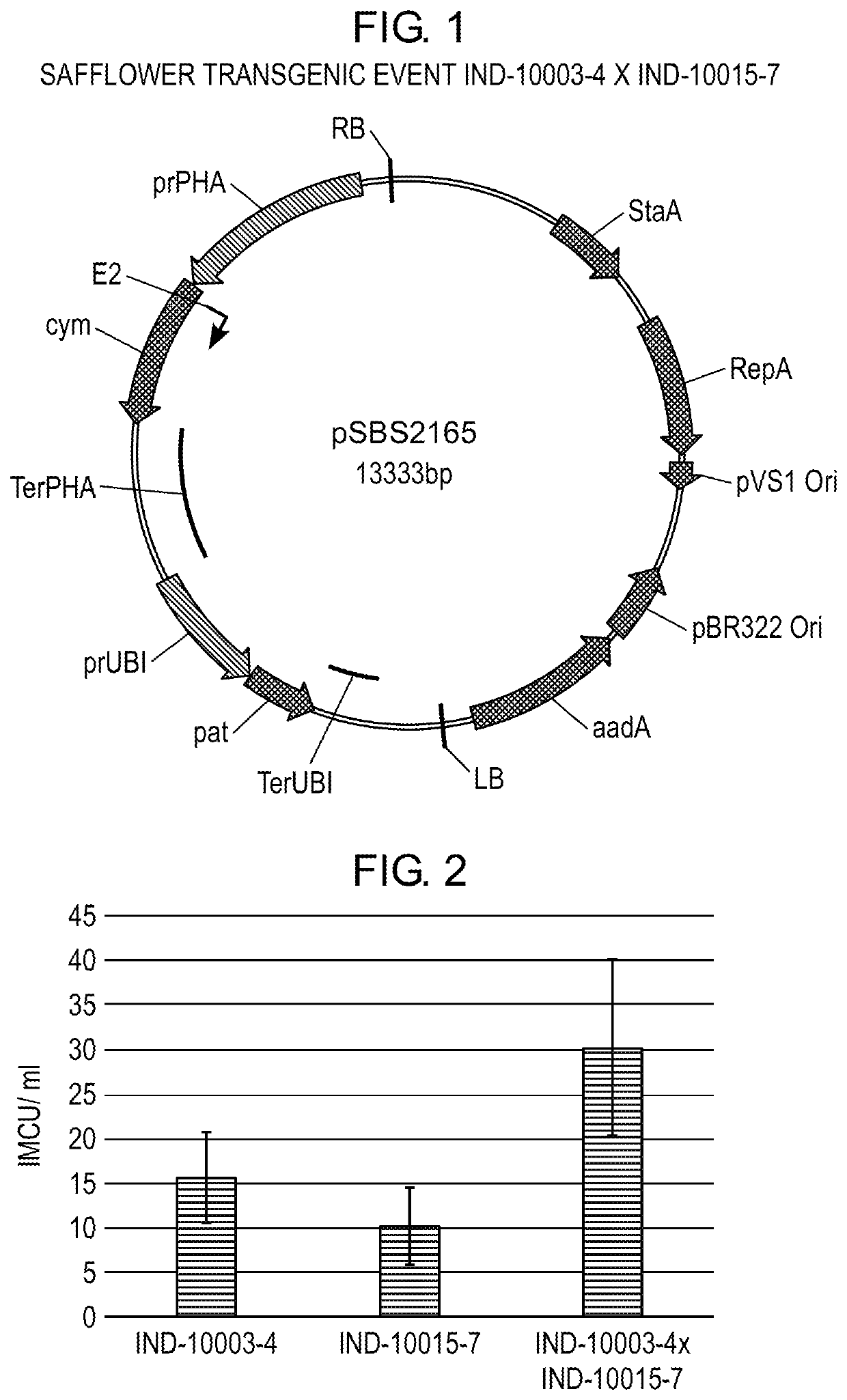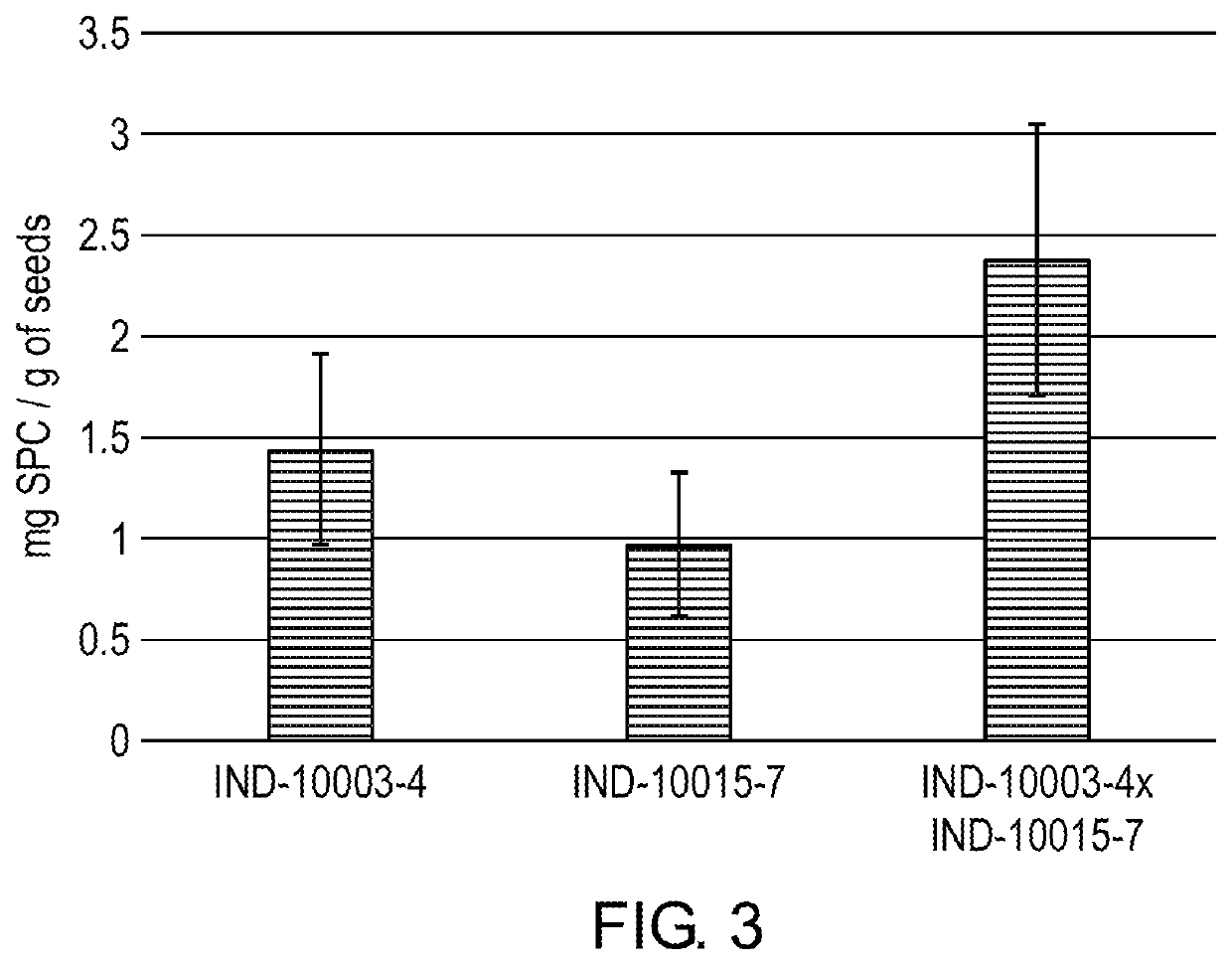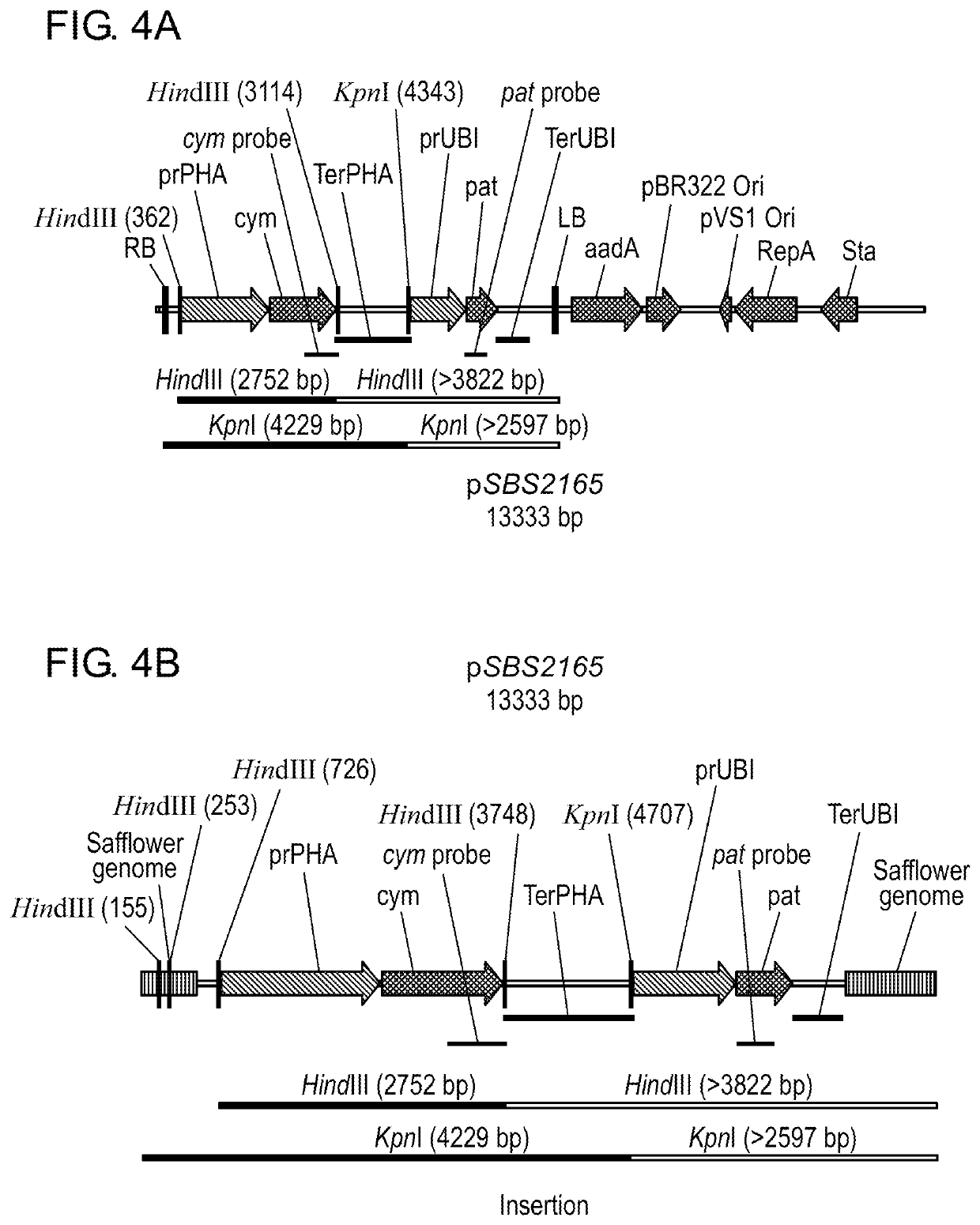Transgenic Safflower Event Stack IND-1ØØØ3-4 X IND-1ØØ15-7 and Methods to Use It
a technology of transgenic safflower and event stack, which is applied in the field of transgenic safflower event stack ind134 x ind1157 and methods to use it, can solve the problem of high production cos
- Summary
- Abstract
- Description
- Claims
- Application Information
AI Technical Summary
Benefits of technology
Problems solved by technology
Method used
Image
Examples
example 1
[0069]Plasmid pSBS2165, which would later be used for the processing of safflower plants, is derived from the family of pPZP binary plasmids. In particular, it is based on the pPZP200 series.
[0070]The transgenic insert and the expression cassette present at the events IND-1ØØØ3-4 and IND-1ØØ15-7 includes the ubiquitin promoter (prUBI) and the terminator TerUBI for the pat marker gene. Additionally, it includes the promoter of the gene pha of Phaseolus vulgaris and the terminator TerPHA for the gene cym.
[0071]The resulting plasmid pSBS2165 is shown in FIG. 1.
example 2
ation of Safflower Plants and Selection of the Molecular Stack of Safflower Events IND-1ØØØ3-4×IND-1ØØ15-7
[0072]The initial step in a transformation test is the preparation of bacterial suspensions of a strain of Agrobacterium tumefaciens, which carries the genes of interest and selection accompanied by the molecular sequences necessary for their expression in plants. These bacterial cultures are used as biological vectors for the transformation of plant cells and for the subsequent regeneration of transforming plants. For this, it is a requirement to maintain fresh colonies of A. tumefaciens at 28° C. on Petri dishes with semi-solid culture media added with selective agents (antibiotics for bacterial selection). From these colonies, bacterial cultures in liquid suspension are initiated for the infection of the transformation target explants.
[0073]The protocol developed in the processing and tissue culture laboratory defines as starting material to be used in processing trials the C...
example 3
ization of the DNA Sequences of the Safflower Event IND-1ØØØ3-4×IND-1ØØ15-7
[0107]The molecular characterization of transgenic safflower plants with both insertion events, belonging to the molecular stack of safflower events IND-1ØØØ3-4×IND-1ØØ15-7, obtained by crossing IND-1ØØØ3-4 and IND-1ØØ15-7, was carried out using Southern blot and molecular biology techniques involving the amplification of specific DNA fragments by polymerase chain reaction and, in some cases, their subsequent sequencing.
[0108]Analysis of the Number of Copies of Coding Regions of Interest
[0109]By means of Southern blot, the number of copies present both in the separate events and in the product of their crossing was determined, thus determining the presence of only one copy of the cym gene of interest, and another in the same locus of the pat companion, using probes that hybridize with these particular regions.
[0110]The digestion of the genomic DNA prior to the electrophoretic run was done with the HindIII and...
PUM
| Property | Measurement | Unit |
|---|---|---|
| width | aaaaa | aaaaa |
| concentration | aaaaa | aaaaa |
| height | aaaaa | aaaaa |
Abstract
Description
Claims
Application Information
 Login to View More
Login to View More - R&D
- Intellectual Property
- Life Sciences
- Materials
- Tech Scout
- Unparalleled Data Quality
- Higher Quality Content
- 60% Fewer Hallucinations
Browse by: Latest US Patents, China's latest patents, Technical Efficacy Thesaurus, Application Domain, Technology Topic, Popular Technical Reports.
© 2025 PatSnap. All rights reserved.Legal|Privacy policy|Modern Slavery Act Transparency Statement|Sitemap|About US| Contact US: help@patsnap.com



